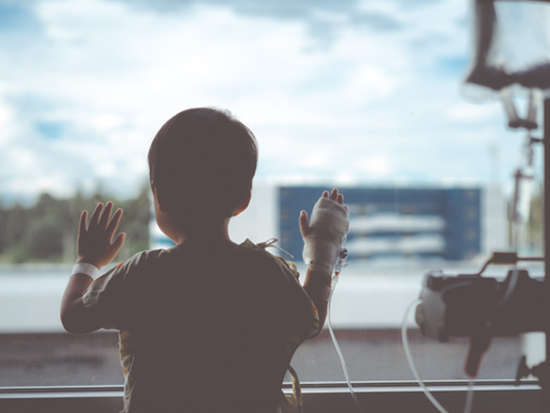 New research from UAB shows a possible link between poverty and a child’s possibility of having a relapse in their acute lymphoblastic leukemia.A new study from the University of Alabama at Birmingham’s Marnix E. Heersink School of Medicine suggests that the economic status of a family could be associated with excessive relapse in children diagnosed with acute lymphoblastic leukemia.
New research from UAB shows a possible link between poverty and a child’s possibility of having a relapse in their acute lymphoblastic leukemia.A new study from the University of Alabama at Birmingham’s Marnix E. Heersink School of Medicine suggests that the economic status of a family could be associated with excessive relapse in children diagnosed with acute lymphoblastic leukemia.
“Acute lymphoblastic leukemia, or ALL, is a type of blood cancer in which uncontrolled production of cancer cells occurs in the bone marrow,” said Aman Wadhwa, M.D., assistant professor in the UAB Division of Pediatric Hematology-Oncology. “This prevents formation of normal blood cells. Treatment of ALL requires several years of chemotherapy, but cure rates with modern treatments exceed 90 percent.”
The study, published in the American Society of Hematology’s journal Blood, monitored over 600 participants who were diagnosed with ALL. Participants enrolled in this study were an average of 6 years old and were followed for nearly eight years after the completion of their treatment.
According to the Centers for Disease Control and Prevention, the weighted average poverty threshold for a four-person household in 2019 was $26,172. For the study, families that reported incomes under 120 percent of the federal threshold were considered to be living in extreme poverty. Overall, 12.3 percent of the study participants met the criteria for extreme poverty.
Researchers found the chance of a relapse of ALL three years after diagnosis to be higher in patients living in households with extreme poverty versus to those without — 14.3 percent more likely compared to 7.6 percent.
“The results of this study show that children with ALL living in extreme poverty are at an increased risk of relapse compared to children not living in extreme poverty,” Wadhwa said. “We also find that children with ALL living in extreme poverty have lower adherence to oral mercaptopurine, a key drug during treatment. However, lower adherence does not fully explain the increased risk of relapse.”
This brings into question for Wadhwa and his team what biologic effects living in poverty might cause and what structural barriers to adequate health care caregivers may encounter, which could increase the risk of relapse.
Looking forward, he hopes that pediatric oncologists caring for children with ALL screen for poverty and use available resources, such as gas cards and food vouchers, to help families struggling with these basic needs.
“We hope that future research delves into the causal mechanisms, such that we can target them directly and further improve cure rates for this disease and all those it impacts,” Wadhwa said.